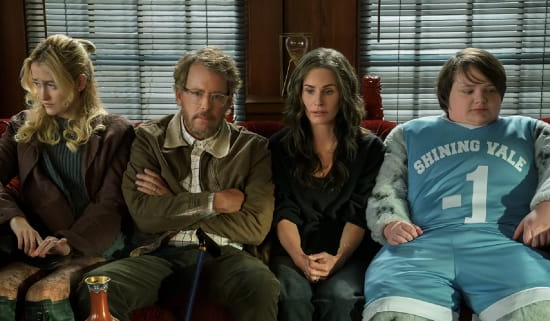
In filming “The Quiet Girl,” the evocative 80s-set story of a mysterious child sent to live with distant relatives for the summer in rural Ireland, cinematographer Kate McCullough says she found her way by keeping herself open to the natural elements of the setting.
“When you arrive on a location, there’s lots to inspire you,” says McCullough, who filmed writer/director Colm Bairéad’s feature debut, an adaptation of Claire Keegan’s acclaimed 2010 short story “Foster,” screening at the Camerimage International Film Festival in the directors’ debuts competition.
The Berlinale prize-winning film, praised for its own quiet qualities and storytelling through minute details, unfolds with the arrival of 9-year-old Cáit at the home of distant, childless relatives – a plan devised to offer relief to Cáit’s own household, where too few morsels are in the larder for too many children.
The destination is a mystery to the child just as she is to its residents. “The trees through the window, moving in a certain way, doors are creaking, floorboards, smells, it’s all very layered in,” says McCullough of the farmhouse location. “I find that really helpful in the process of prepping a film. You can start to build out from that and it’s kind of an anchor.”
The crew managed to find an atmospheric house from the era in which the story is set, says, McCullough, which signified a wealth of visual opportunities – if also challenges.
“The book is set in Waterford, which is down on the south coast. But we shot in Meath, about an hour north of Dublin, which is where I’m originally from. That was quite nice because I grew up on a farm. That milking parlor hasn’t changed, I’d say, since the 80s or 90s. It’s very hard to get access to those spaces now.”
Because the house had not been renovated, it offered authenticity in spades – but also forced McCullough to shoot around whatever angles she could find.
“I’m used to working on location,” she says. “I come from a documentary background so I’m used to tight corners. Also, the car was pretty tight – we didn’t have access to remote gear so I was in these weird contortions in the car.”
But the pain is worth it for the realism, she says. “I like locations – I’ve only shot in the studio maybe twice. It’s a bit of a novelty to me, dreaming up reality in a box.”
McCullough’s past work shows remarkable versatility, with dozens of shorts, music videos, TV, film, narrative and documentary projects, and she relishes new challenges.
“It’s about trying to rethink again and forget everything you know and be fresh to the material.”
The director, for his part, was also committed to finding targets of opportunity rather than going in with a detailed shoot plan, says McCullough. “We didn’t do any storyboards. It was a shot list, but in a way the shot list was developed just to be sure we got the story shot in the time we had.”
Under child labor laws, with a 9-year-old star such as Catherine Clinch – who turns in an arresting, naturalistic performance as Cáit – shoots with her were restricted to half days. With a total production time of five weeks, it meant the entire cast and crew had to be fully primed to go when Clinch’s day started.
“You have to sort of begin the scene without her, then bring her in, then take her out. There’s lots you can do with a double but it probably forced us to shoot a bit differently. If we wouldn’t have Catherine, how can we rethink this scene?”
The time limits also led to shots that would build dramatic tension, McCullough says: “Trying to hold back on revealing her, her character, also this kind of slow tilt down from the landscape to reveal her – things aren’t always as they seem.”
Filming a story from a child’s perspective was new to the cinematographer too, she says, but the Academy frame size used made sense for the perspective.
“I haven’t done a feature centered on a kid. Coming down to her level, the choice of aspect ratio was linked to that. You’re more focused on the verticality of things, the difference between the adults and Catherine.”
Working with a first-time child actor is taking a risk, certainly, she says. But in this case, it was a sound bet. “She sort of set the tone. This actor, from day one, was just very composed and focused and wanted to get it right.”
Clink’s manner is much like her character’s in some ways, says McCullough – though luckily that does not grow from a place of neglect, as Cáit’s does.
“She’s quite contained,” she says of the actress. “I’ve seen her smile and laugh much more since the film has come out.”
Clink was cast after a call went out to Irish-language schools throughout the country, and the film itself was funded in part through a Cine4 initiative to develop more such projects. When filming Irish-speaking subjects, McCullough adds, it’s important to allow for body language in the frame.
When filming children, most cinematographers would be nervous about using a locked-down camera and employing the long takes that make up “The Quiet Girl.” The thinking is often “Maybe we should go handheld so we won’t miss a thing,” says McCullough.
But not with Clink. “It was just allowing her space within the frame – she’s just incredible to look at. There’s always something going on. There’s an interior world. Even when we were doing camera tests, she’d never been on camera before but she was like, ‘I’m ready for this.’”













